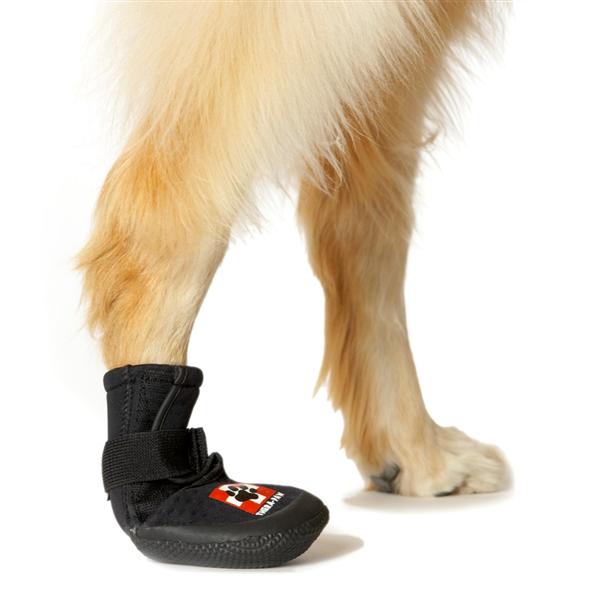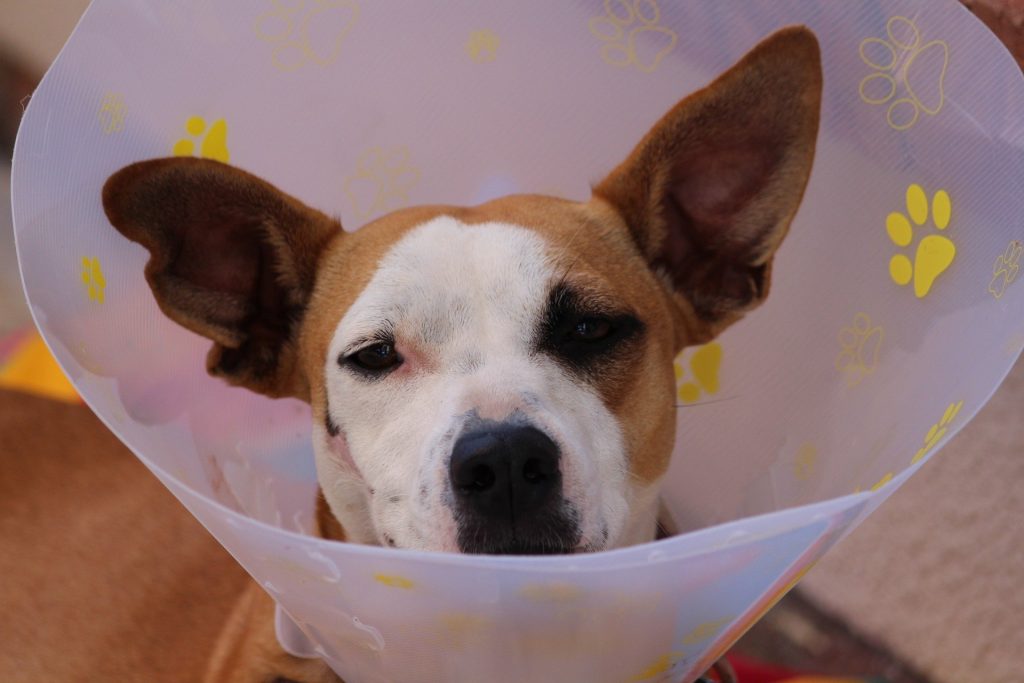It’s a good idea to have a first aid box for your dog to hand. Of course, any illness should be handled by your vet, but if you have the right tools, you can make sure your dog has the basics done before travelling to the surgery. Here’s what you should keep in your dog’s first aid box;
Your vet’s number
You should register your dog with your chosen veterinarian as soon as you can. Registering means they have all your dog’s details on file and if your dog has previously used a different veterinarian, ask your current practice to call them to get your dog’s full history. This is really important as your dog may have allergies which another vet may have noted, as well as any other important details about your pet such as if they have had a reaction to a certain drug. Make sure you have the vet’s number and address stored somewhere safely.
Not all vets use the same staff for out of hours for emergencies. Ask your vet what their out of hours procedure is as many outsource this service. As out of hours can be run by another company, make sure you have their number too as it will differ to your normal vets. Most surgeries will state their hours on their answerphone, however, it’s better to be organised and do the leg work now, as it’s one less thing to worry about if your dog is unwell.
A thick towel
Designate a ‘dog towel’ and keep this with your first aid kit. A towel can help calm a dog if they are panicking and need to be restrained. They are also useful for a clean surface to lay your dog on should you need to examine them.
Gloves and hand sanitizer
Gloves and hand sanitizer are both for you and should be used to prevent the spread of germs.
Saline
Saline is used to flush out wounds, such as bite wounds before bandaging them.
Syringes
Syringes are good for flushing wounds or administering any medicine as directed by your vet.
Gauze
Gauze can be as a primary layer of a bandage or to stem a bleed. Ideally, you should have clean hands and wear gloves, before applying pressure to the wound.
Bandage material
Bandages are comprised of three layers – a padded layer (a roll of cotton wool could also be used), a conforming layer and a self-adhesive layer to hold it all together. The self-adhesive bandage will constrict when wet so care must be taken if using it. To apply it properly, unroll a small amount, place it around the limb and then roll out some more. Never wrap it tightly and only use this to get your dog to the vet – if you need to use it long term, ask your vet to show you how to place it correctly and safely.
If your dog has a cut, you must use gauze first as the padded layer of the bandage will stick to open wounds.
Surgical sticky tape
This can help you to keep a bandage in place. The tape can also be used to secure a splint.
Scissors
Nursing scissors are bent at the end, which will allow you to cut the bandage material without accidentally cutting your dog.

Tweezers
Tweezers can be used to remove foreign bodies, such as thorns, grass seeds or stingers from your dog.
A paw cover
Paw covers are good to use if your dog has injured their paw. If they keep standing on an injured paw, it can reopen the wound and delay healing. A paw cover offers a bit more protection.

Style: “SH-5500”
A muzzle
Even the friendliest, well-mannered dogs can behave differently if they are frightened or injured. A muzzle is used to keep you safe – the last thing you need is an injured dog and a trip to A&E.
Choose a basket muzzle (like this) as it allows your dog to pant and drink whilst wearing it – muzzles that wrap tightly around your dog’s muzzle must only be used for very short periods of time, whilst basket muzzles can be worn for much longer.
Cotton wool
Cotton wool balls are good to use around ears and eyes. Don’t use them to bandage around wounds though as they are fluffy and can stick to the healing area.
An Elizabethan collar
An Elizabethan collar is used to prevent your dog from licking or bothering a wound. There are lots of different types, from the traditional plastic ones to fabric ones and even inflatable ones. There are also recovery vests if your pet protests too much about a collar.
Collapsable bowl
These are great if you are out travelling or walking with your dog. Not only can they be used to hold water for your dog to drink, but a collapsable bowl can come in useful should you need to dampen any materials needed such as cotton wool.
Thermometer
A dog’s temperature can be taken rectally using a digital thermometer. You should ask a vet to show you how to do this before doing it yourself. To take a dog’s temperature, put some Vaseline on the end of the thermometer and gently insert it into your dog’s rectum. A dog’s temperature should be 38.3 and 39.2 degrees Celsius.
Antibacterial spray
Antibacterial sprays are good to have to hand should your dog get a cut, scrape, hot spot or abrasion. After cleaning with saline, the spray can be applied.
Vetericyn Plus Antimicrobial Wound and Skin Care can be sprayed directly on the wound or F10 Wound spray not only applies an antiseptic barrier but also is an insecticide to repel flies.
Foil blanket
A foil blanket can be used if your dog is hypothermic to help raise their body temperature whilst you travel to the vets.
Cold pack
Cold packs can be used to decrease inflammation and swelling after an injury or sting. Don’t leave your dog unattended with a cold pack as they could harm them if ingested.
Tick remover
Ticks can be easily picked up in the long grass and can carry Lyme’s disease. A tick remover makes removing them much easier, just hook it under the tick and twist and the tick should detach itself. Inspect the tick to ensure the head and legs are attached as they can cause problems if left in your dog – this is why you should never pull or burn a tick off.
A torch
If you are out and about and your dog is injured, a torch will help you view any injuries much easier. They are also handy to have around the home to see between the toes and pads easier.

That should cover all the basics! Hopefully, you will never need to use any of it, but it’s always better to have a first aid kit just in case your dog needs it.
Please note, this blog is not to replace veterinary advice. Your vet should always be contacted should you have any concerns regarding your dog.


